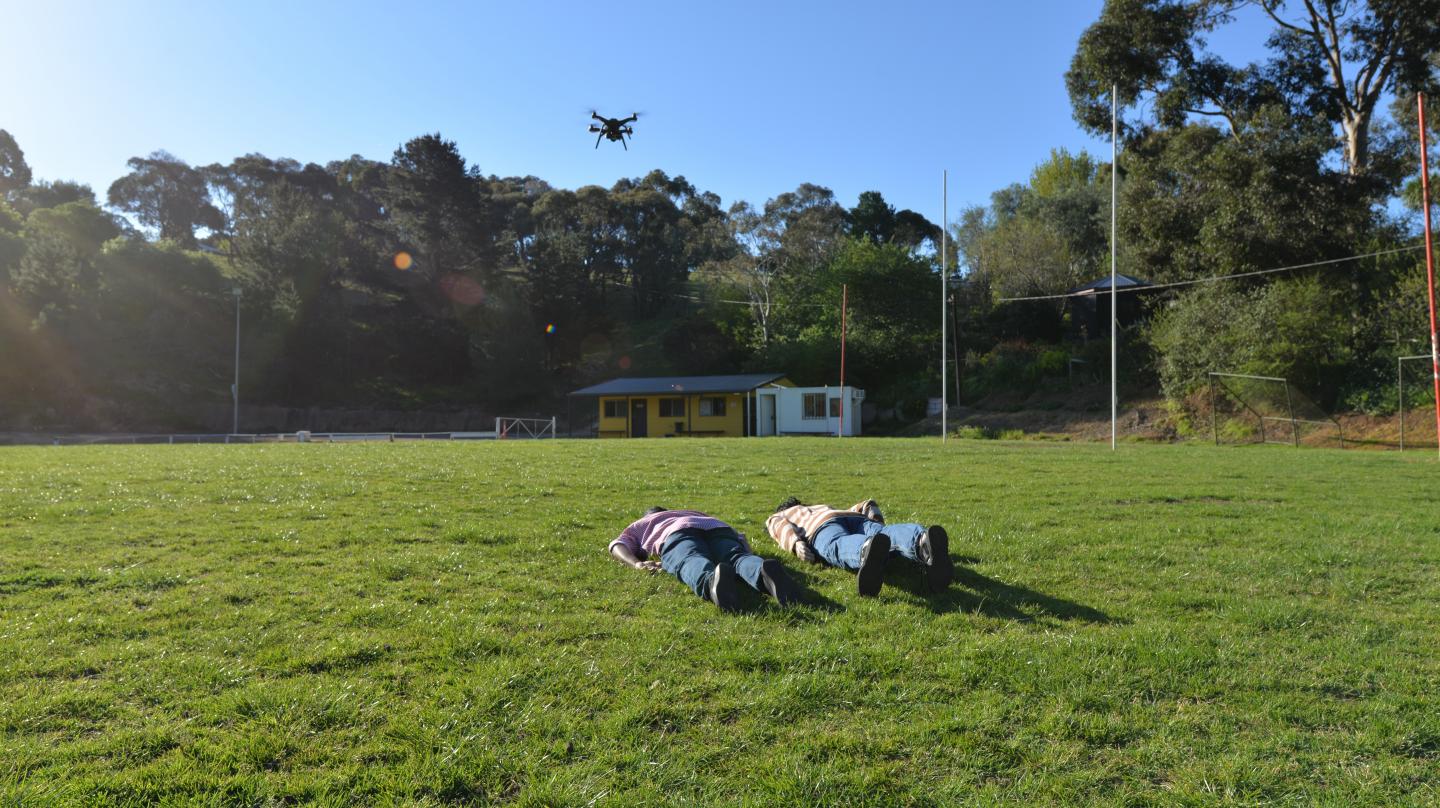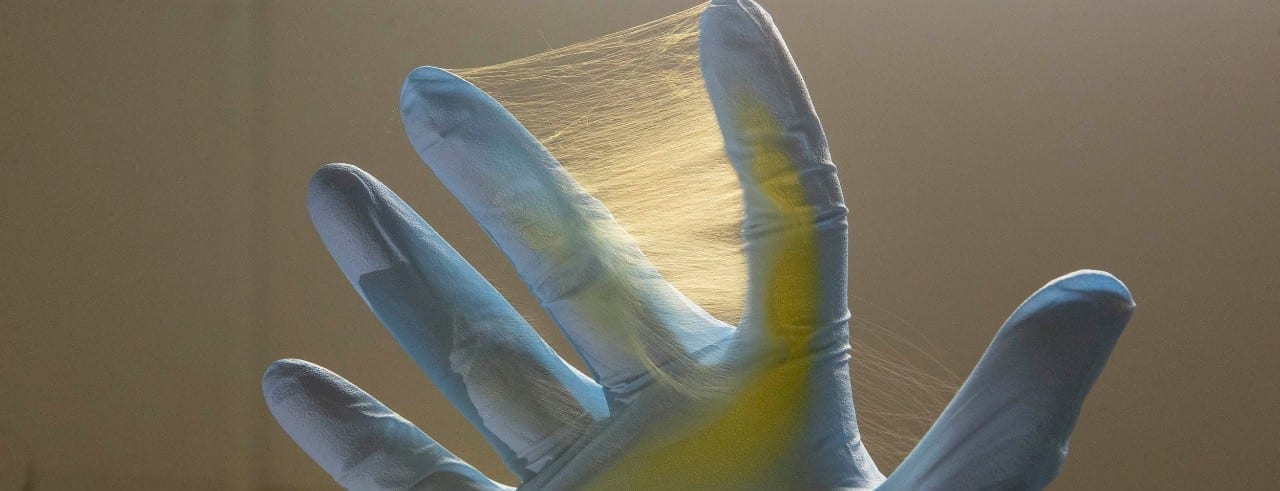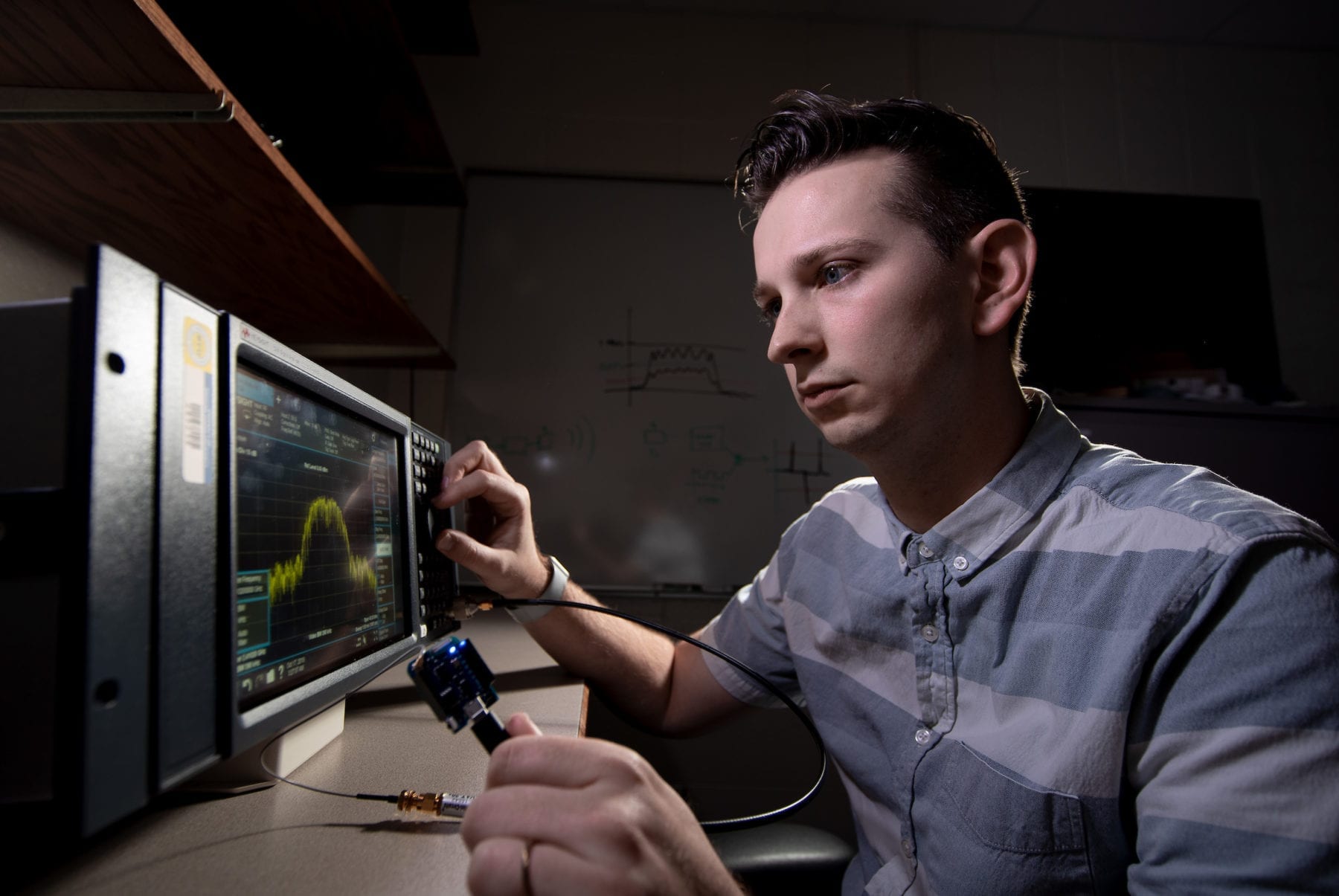
New technique monitors vital signs
Autonomous drone cameras have been trialed for several years to detect signs of life in disaster zones. Now, in a world first study, researchers from Adelaide and Iraq have taken this a step further.
Using a new technique to monitor vital signs remotely, engineers from the University of South Australia and Middle Technical University in Baghdad have designed a computer vision system which can distinguish survivors from deceased bodies from 4-8 metres away.
As long as the upper torso of a human body is visible, the cameras can pick up the tiny movements in the chest cavity, that indicate a heartbeat and breathing rate. Unlike previous studies, the system doesn’t rely on skin colour changes or body temperature.
The breakthrough is a more accurate means of detecting signs of life, the researchers say.
UniSA Professor Javaan Chahl and Dr Ali Al-Naji, the study leaders, made global headlines in 2017 when they showed for the first time that a camera on a drone could measure heart and respiratory rates.
At the time, their technique was based on detecting changes in human skin tone and the camera needed to be within three metres of the person. The technique was also limited to one pose where the subject stood in front of the drone, not lying prone as it would be in a disaster zone.
Other techniques using thermal cameras can only detect signs of life where there is a contrast between the body temperature and the background, making this difficult in warm environments. Thermal cameras are also unreliable where people are wearing insulated clothing.
“This study, based on cardiopulmonary motion, is the first of its type and was performed using eight people (four of each gender) and a mannequin, all lying on the ground in different poses,” Prof Chahl says.
“Videos were taken of the subjects in daylight, up to eight metres away, and in relatively low wind conditions for one minute at a time, with the cameras successfully distinguishing between the live bodies and the mannequin.”
Prof Chahl says the technology could be used to monitor for signs of life where time is critical, helping first responders in their search to find survivors in disaster zones.
“This system would be ideal for many situations, including earthquakes and floods, nuclear disasters such as Fukushima, chemical explosions, bio attacks, mass shootings, combat search and rescue or where a plane has crashed in a remote area.”
Current ground-based operations for rescuing survivors in disaster zones include using rescue robots and rescue dogs, which are expensive and hampered by restricted access.
He says the motion-based system needs additional testing in adverse weather conditions and to ensure accurate readings when bodies are partially obscured.
Learn more: World first study with drone cameras now separates living from the dead
The Latest on: Monitoring vital signs remotely
[google_news title=”” keyword=”monitoring vital signs remotely” num_posts=”10″ blurb_length=”0″ show_thumb=”left”]
via Google News
The Latest on: Monitoring vital signs remotely
- QHSLab, Inc. Announces Preliminary Unaudited First Quarter Revenue Resultson April 26, 2024 at 5:57 am
WEST PALM BEACH, FL, April 26, 2024 (GLOBE NEWSWIRE) -- QHSLab, Inc. ("the Company") (OTCQB: USAQ), a leader in digital health and point-of-care technologies designed to empower clinicians with ...
- Smart infant monitoring company Owlet partners with Wheelon April 25, 2024 at 4:13 pm
“We’re thrilled to announce our strategic partnership with Owlet, a leader in smart infant monitoring. This collaboration marks a significant milestone in our mission to expand healthcare access and ...
- CLOUD DX Signs Contract Renewals with 2 Ontario Community Paramedic Services Valued at $380,000on April 23, 2024 at 8:31 am
Contract renewals reflect high customer satisfaction with Cloud DX Connected Health products and services across North America.
- Transforming Telehealth: How AI-Powered Virtual Consultations and Remote Monitoring Are Shaping the Future of Healthcareon April 22, 2024 at 2:58 am
Discover how AI-powered telehealth is transforming healthcare with advanced virtual consultations and remote monitoring, enhancing accessibility and efficiency. Explore the integration of AI in ...
- Jayadev Memorial Hospital deploys Dozee’s AI patient monitoring systemon April 15, 2024 at 9:09 am
The technology has been adopted to enhance patient safety and clinical outcomes within the hospital’s non-ICU wards.
- Remote patient monitoring: the future of health technologyon April 14, 2024 at 10:55 pm
The future is now: the technologies of today were the stuff of sci-fi novels a few years ago. Artificial limbs controlled with a thought, genetically modified pigs bred for organ transplantation into ...
- Remote monitoring of heart attack patients found to reduce hospital readmissionson April 14, 2024 at 5:00 pm
Remote monitoring of patients who had recently ... Half of the group had devices installed at home, allowing them to send their vital signs and call specialist cardiology teams for a remote ...
- Remote SNF monitoring partnership promises 25% rehospitalization reductionon April 10, 2024 at 9:03 pm
A new partnership between technology company Circadia Health and 77 skilled nursing facilities operated by Ciena Healthcare aims to significantly improve preventive care and reduce preventable ...
- Smart watches could reduce hospital readmission for heart attack patientson April 1, 2024 at 6:07 pm
“It allows us to monitor a patient’s exercise, their heart rate, and other vital signs remotely, rather than having to come into a medical office setting to do so.” Dr. Lucas Marzec sai ...
- Medicare pays millions for remote vital sign monitoring. Is it worth it?on March 18, 2024 at 5:49 am
Billy Abbott, a retired Army medic, wakes at 6 every morning, steps on his bathroom scale and uses a cuff to take his blood pressure. The devices send those measurements electronically to his ...
via Bing News










